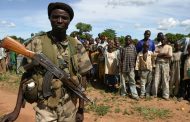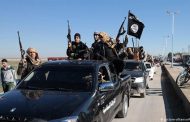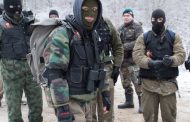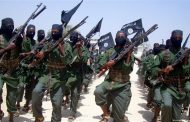The World Bank and many Western nations are under pressure to release funds that could avert famine in Afghanistan as a Himalayan winter closes in and the country’s former allies grapple with how to keep the population alive without enabling more Taliban atrocities.
Afghanistan’s descent into destitution since the Taliban’s victory in August is fueling concerns of an armed uprising or even civil war, amid accusations that U.S. President Joe Biden’s administration is withholding food and money as punishment for the Western alliance’s humiliating defeat.
Afghanistan’s aid-dependent economy—international donors previously accounted for 43 percent of its GDP and 75 percent of its public expenditures—has imploded in the four months since the Taliban took control. Now, the Afghanistan Analysts Network estimates around half of Afghanistan’s 40.2 million people are at “crisis or emergency levels of food security,” and more than half of the population will be in peril as winter progresses. The Taliban’s interim prime minister, Mohammad Hasan Akhund, recently called the looming famine a “test from God.”
The World Bank holds $1.5 billion in trust for Afghanistan, with $1.2 billion earmarked for projects agreed to by the previous government. It will be months before complicated legal requirements needed to unlock the money are completed. The money is not likely to be released until the first fiscal quarter of 2022—and then only incrementally.
There are some minor cash injections. The World Bank has $280 million in its Afghanistan Reconstruction Trust Fund (ARTF), which had not been committed before the Taliban victory in August. The World Bank is expected to transfer that fund on Friday to the World Food Program and UNICEF, which can use the money as they see fit.
One immediate use will be to pay the salaries of Afghans working in the health sector for the next six months through a project called Sehatmandi, which was set up by donors that supported the former government to provide basic health care across the country. Other sectors, such as education, will be harder to tackle: Most teachers were government employees paid by the Ministry of Education, so the money has to pass through Taliban hands first. ARTF donors want to hear from the Taliban that girls will have equal access to schooling before they agree that funds can be released for education.
The problem is it’s hard, both morally and legally, for international agencies and banks to release any money for Afghanistan now that a bunch of blacklisted terrorists run the government. U.S. and United Nations Security Council sanctions make it illegal for the United States, U.N. members, or businesses in those countries to deal directly with the Taliban. Few commercial banks will risk doing business with Taliban-controlled Afghanistan, so it is virtually impossible to send money into the country. The United Nations has flown in cash, but that’s expensive and unsustainable.
Afghanistan’s central bank reserves, close to $10 billion—much of it held in the United States—have also been frozen since Aug. 15. The Taliban regard that money as a national asset and demand it be made available, but that is also illegal under the sanctions regime. Meanwhile, Afghans at home and abroad cannot access their personal bank accounts, leading to a severe cash crisis. As the Taliban have taken control of the country’s banking sector, private banks have collapsed and owners have left the country, fearing kidnappings or worse. The Afghan currency has lost about half its value since the Taliban takeover.
This week, four prominent leaders of nongovernmental organizations called for a review of the U.S., U.N. Security Council, and European Union sanctions regime to relieve some of the suffering by making money available.
“No one wants to fund the Taliban regime,” wrote officials of the Swedish Committee for Afghanistan, the British & Irish Agencies Afghanistan Group, the Norwegian Afghanistan Committee, and Cordaid. “But the current over-compliance of banks with sanctions is killing civilian Afghans at a rate far higher than the Taliban, Islamic State in Khorasan Province, the warlords, former governments, and international military forces have done combined in the last 20 years.”
The International Crisis Group suggested the Biden administration greenlight a “phased return” of the frozen reserves to the central bank, “releasing an initial tranche on a trial basis to monitor for unintended effects.”
But many in the Afghan diaspora oppose cooperation with the Taliban, suspecting the former insurgents—the world’s biggest drug cartel—would hijack and divert funding to their own commanders and fighters to stanch defections to Islamic State-Khorasan and other jihadi groups.
Afghanistan doesn’t just have money troubles. Unprepared for governance, the Taliban have descended into factional fighting that has empowered the notoriously brutal faction of Sirajuddin Haqqani, now Afghanistan’s interim interior minister. Security experts said Taliban factions are fighting one another for supremacy while transnational jihadi groups are establishing bases in Afghanistan as the Islamic State spreads its presence, exacerbating the risk that Afghanistan will again become a hothouse of global terrorism.
“We already see the Taliban, at least the military wing, are helping transnational terrorist groups to get bases in the border areas of Afghanistan,” said Tamim Asey, a former Afghan deputy defense minister and founder of the Institute of War and Peace Studies. “We are in for a security disaster. I am afraid a worst-case scenario could be a Syria as a model for Afghanistan.”
He and others said the Taliban are providing safe haven to the East Turkistan Islamic Movement, an Islamist Uyghur group that aims to establish a homeland in China’s Xinjiang region; the Pakistani Taliban, known as Tehrik-i-Taliban Pakistan (TTP); the Islamic Movement of Uzbekistan; Jamaat Ansarullah, which aims to overthrow the government of Tajikistan; and al Qaeda, which has long had a close association with the Taliban in Afghanistan. Although the Taliban are bitter rivals of the Islamic State, the local branch is taking advantage of the situation to solidify its presence in the country.
With the country out of money, running low on food, and riven by violent divisions, resistance figures warn that current low-level violence could morph into popular insurrection and, possibly, even civil war. The Taliban lack an army or police force, there is no rule of law, and provinces outside the capital are run as fiefdoms by former commanders rewarded for battlefield loyalty with governorships.
“Fighting and instability are in every single part of the country. Nowhere is immune,” said Ali Maisam Nazary, spokesperson for the National Resistance Front (NRF), which is based in neighboring Tajikistan. Led by Afghan politician Ahmad Massoud, son of the late Northern Alliance leader Ahmad Shah Massoud, the NRF has sought to jump-start a broad-based resistance to Taliban rule but lacks political, financial, and military support.
“With the current situation, there are three scenarios that are imaginable,” Nazary said. “It is possible that the people will rise up; we will see the implosion of the Taliban; we have civil war.”








































admin in: How the Muslim Brotherhood betrayed Saudi Arabia?
Great article with insight ...
https://www.viagrapascherfr.com/achat-sildenafil-pfizer-tarif/ in: Cross-region cooperation between anti-terrorism agencies needed
Hello there, just became aware of your blog through Google, and found ...